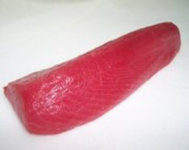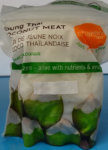On April 15, 2019, the CDC issued a food safety alert about a multistate outbreak of Salmonella Newport infections linked to frozen, raw ground tuna supplied by Jensen Tuna. A total of 13 people infected, with the outbreak strain of Salmonella, have been reported from seven states (CT, IA, IL, MN, ND, NY, and WA). Two people have been hospitalized. No deaths have been reported. The recalled tuna was probably not sold directly to consumers in grocery stores but was likely used in food dishes sold by restaurants or retailers. @ https://www.cdc.gov/salmonella/newport-04-19/index.html
ruth
Outbreak of Salmonella Infections Linked to Frozen Raw Tuna
ruth
FDA claims that there are some companies who knowingly distribute and sell dangerous or otherwise illegal products that put consumers at risk, and FDA vows not to allow these companies to compromise the health of people. The FDA is launching a new tool to quickly alert the public when they become aware of ingredients that appear to be unlawfully marketed in dietary supplements. This Dietary Supplement Ingredient Advisory List will be housed on the FDA website. Ingredients will be added to the List following an initial FDA assessment indicating the ingredient may not lawfully be in dietary supplements. FDA states that “As the dietary supplement marketplace has grown, the introduction of new ingredients often raises complex questions involving science, policy, and the law.” Eleven companies received warning letters, FDA is ready to take enforcement action without further notice if the companies do not immediately cease distribution of the products. @ https://www.fda.gov/NewsEvents/Newsroom/PressAnnouncements/ucm636132.htm?utm_campaign=041619_PR_FDA%20takes%20new%20steps%20to%20protect%20consumers%20in%20dietary%20supplements%20arena&utm_medium=email&utm_source=Eloqua
FDA Statement from Deputy Commissioner for Food Policy and Response Frank Yiannas on new steps to protect consumers from unlawful ingredients in dietary supplements
ruth
The Canadian Food Inspection Agency (CFIA) recalled Feeding Change brand Young Thai Coconut Meat from the marketplace due to possible Salmonella contamination. The coconut was sold in British Columbia and Ontario and may have been sold nationally at the retail level. The recalled product is Feeding Change Young Thai Coconut Meat, sold in 454 gram packages. The recall was triggered by the Canadian Food Inspection Agency Test results. The CFIA is verifying that industry is removing the recalled product from the marketplace. There have been no reported illnesses associated with the consumption of this product. @ https://inspection.gc.ca/about-the-cfia/newsroom/food-recall-warnings/complete-listing/2019-04-14/eng/1555293947707/1555293949168
https://inspection.gc.ca/about-the-cfia/newsroom/food-recall-warnings/complete-listing/2019-04-14/eng/1555293947707/1555293949168
ruth
The Centers for Disease Control and Prevention (CDC) said that the E. coli O103 outbreak affecting 109 people in six states (Kentucky(54), Tennessee (28), Georgia (17), Ohio (7), and Indiana (1)) has been traced back to ground beef as the likely source. A total of 109 people infected with the outbreak strain of E. coli O103 have been reported from six states. Of the 109 sick people, 17 were hospitalized. No death or hemolytic uremic syndrome is reported. Reported illnesses began from March 2, 2019, to March 26, 2019. Epidemiological data points to ground beef as the source. Sick people reported eating ground beef at home and in restaurants. No common supplier, distributor, or brand of ground beef has been identified. This outbreak is the third-largest multistate E. coli outbreak reported in 20 years. @ https://www.cdc.gov/ecoli/2019/o103-04-19/index.html
Investigation Notice: A multistate outbreak of E. coli Infections



